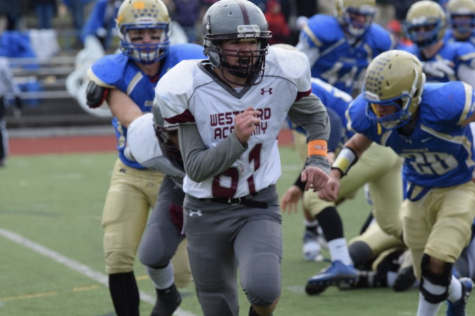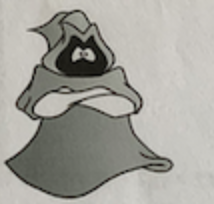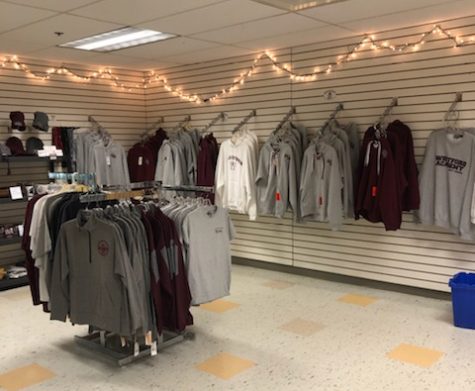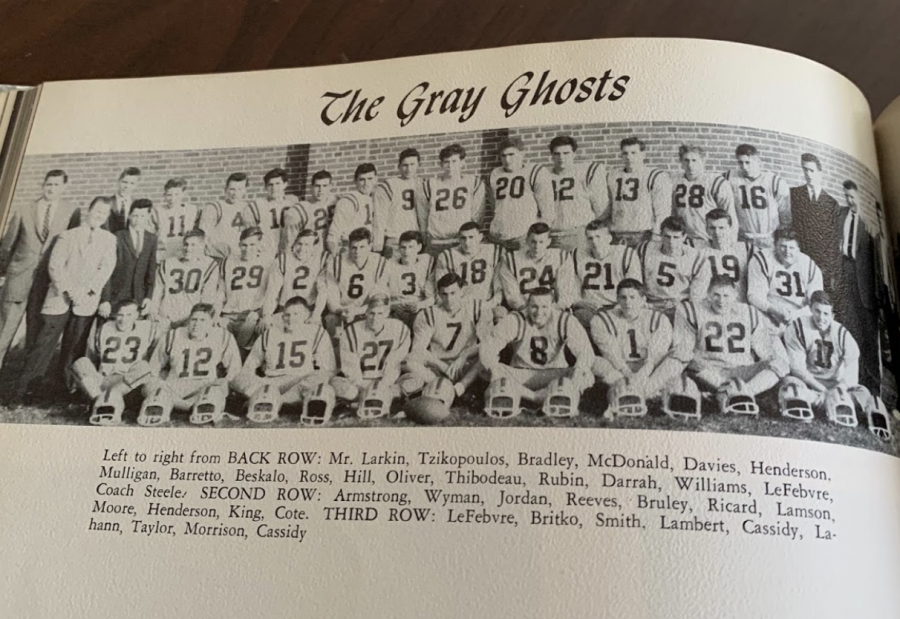Community looks deeper into Grey Ghost’s roots
October 7, 2020
The Black Lives Matter protests took over mainstream media this summer as people from all over the country voiced their support for anti-racist actions. Social media, connecting people during a world-wide pandemic, aided the travel of news and fostered remote discussions about racial issues. With this wave came the uncovering of smaller controversies.
Here in Westford, after being an ongoing conversation for years, the WA mascot has become a larger concern as more people learn about the Grey Ghost’s plausible ties to a Confederate colonel.
The speculation of the mascot’s origin stems from the popular television show The Gray Ghost. The show was very popular during the time the new mascot was chosen in 1959, so some believe that interest influenced the decision to make the “Gray” Ghost mascot. For several years, the mascot was the “Gray Ghost” instead of the “Grey Ghost.” The old spelling of WA’s mascot serves as an issue because Confederate Colonel John S. Mosby had “the Gray Ghost” as a nickname. Linking the inspiration of the television show with WA’s mascot, there could possibly be a connection between the mascot and a Confederate Colonel.
Doing some research of his own, WA history teacher Michael Martell looked through multiple historical archives when he learned of the Grey Ghost conspiracies.

“I had always heard the same thing, which was that the mascot was related to a ghost at the old Abbott Elementary, [now the Roudenbush Community Center]. My mother and five of her brothers and sisters went through Westford Public Schools. So, they always told me that story about the ghost. Maybe four years ago, someone brought up Colonel Mosby and the television show… So, I decided to see what I could find,” Martell said.
Through his research, Martell unraveled the events that took place before Westford Academy officially deemed the Grey Ghost as its mascot.
“There are three stories. Either it was the uniforms and the coach, who got the good deal and saw them as resembling ghosts, the television show based on the Confederate soldier, or it was the ghost in the building. The timing of these three stories are very synced… The coach theory could work because the coach got a great deal on the uniforms, thinking financially like we still do today, and thought ghosts would be fitting and affordable. However, since the television show was right around this time, it is really hard to tell,” Martell said.
In 1959, the mascot changed from the Black Knight, which was in place for two years, to the “Gray” Ghost. According to Martell, the mascot name most likely shifted since the school obtained new uniforms. The school gave the class of 1960 the choice between the Lancer, the “Gray” Ghost, and the Eagles. The student council ultimately chose the “Gray” Ghost to represent WA.
The current design, reworked from a depiction of Casper the Friendly Ghost due to copyright concerns, is a grim reaper. Created by former WA Athletic Director Bob Conley’s son, David Conley, the illustration represents the fear WA creates in its opponents as well as WA’s prevalence when it comes to sporting events.
The school committee meeting on July 13 informed the public on the cause of the controversies surrounding the mascot. The meeting brought in WA alumnus Geoff Hall, who graduated in 1966. Hall, a current Westford Trustees member and a former Massachusetts Representative, briefed the school committee on his perspective.

“Some think that the mascot came from the popular television show based on Mosby’s Rangers. However, another hypothesis is that football coach Chet Steele saw his players wearing the new grey uniforms on a foggy afternoon and believed they looked like ‘gray ghosts,’ A third theory, which I can verify, is the spirit at the Roudenbush Community Center, [previously known as the Abbott School]. When I asked a member of the Class of 1960, he did not remember the election or the television show, but he certainly remembered the ghost that was at the school,” Hall said.
Hall remarked that he never witnessed people connecting the mascot with the Confederate theory. While visiting sporting events throughout the years, Hall does not recount a time where a coach, student, or teacher thought and acted as if the mascot was a Confederate symbol.
“I never saw the symbol of the Grey Ghost used in any [bad way]. It never carried a Confederate flag or wore a rebel hat. The original ‘Gray’ Ghost was only the name for the football team. It became the symbol of the school somewhere along the line. Through it all, they always emphasized the Ghost. They never memorialized or honored the Confederate tale,” Hall said.
Although Martell knows the true inspiration will remain a mystery, muddled by many factors, he believes the student body should make the decision on whether or not the mascot stays.
“My job is really to give students the information and let them choose. I stand by that idea. I think the information is there; it needs to be a student-led decision,” Martell said.
Like Martell, WA Principal Jim Antonelli understands Westford will never know the honest meaning behind the mascot. Antonelli sees the tradition of the mascot and would prefer to keep the mascot as long as every student feels comfortable.
“There is not a lot of evidence to indicate one specific factor that contributes to the name. There is a lot of history and tradition in Westford; Westford Academy is the sixth oldest public school in America. If there is a way to move the mascot away from a symbol that is completely inappropriate, I think we should try and mitigate that [process]… I am very open to continue this conversation,” Antonelli said.
Antonelli anticipates the weak budget providing setbacks for the mascot change. Even if the community wants to modify the mascot, weighing the current budget with the pandemic, Antonelli thinks a mascot change will have a serious effect on the already set-in-stone budget allocations. He, along with Martell, foresees the town making financial prioritizations before the budget is spent on a new mascot.
After receiving the information from Hall and Antonelli at the school committee meeting, the committee discussed the possible ways of handling the matter. Ultimately, the committee felt the issue solely depends on the opinions of students of color. Despite coming to the conclusion that there is no substantial evidence targeting the Confederate theory, the school committee wants to put out polls, forums, and other resources for students to share their thoughts.
“I think this is a topic that has come up repeatedly over the last couple years. I think it’s time that we all explore it further. We need to figure out what the original intent was, and it sounds like, through all the research, that the original intent is ambiguous; we may never know. Maybe it is a combination of all those factors that made the name appealing at the time. Now, the question is ‘what is the impact on our students’. It matters more that the mascot represents [all students], and [all students] can take pride in the mascot,” school committee member Gloria Miller said.
Senior Brian Ellis, a student representative for the school committee, looked back at his years in the Westford Public School system and gave his lifelong perspective on the mascot’s origins. Like some students, Ellis values the tradition that the mascot serves in town. He sees the mascot as a town symbol that has never spread Confederate beliefs.
“Growing up, I never felt a real tie between the mascot and the Confederate show. It was commonly known that the mascot was based off of the ghost that haunted the third floor of the Roudenbush Center. Those stories were the ones I heard. So, for such a loosely held connection to a Confederate colonel in a show, I don’t think we should spend too much money to change the mascot,” Ellis said.
Recent WA graduate Shivangi Ranjan feels differently than Ellis. As an Indian-American woman, Ranjan recognizes the pain that comes with microaggressions, racist remarks, and ignorance. From her perspective, tradition can never outweigh present-day emotions.
“Ever since I learned that there was a possibility that the ghost could be linked to confederacy, I have thought that it should be changed. I understand that people may have some sentiments attached to the mascot, but I don’t think any of those sentiments are more important than the fact that this mascot is making people uncomfortable and hurt due to its history,” Ranjan said.
If the Grey Ghost were to change, the school committee and students want it to be a mascot with an accurate representation of WA spirit. If necessary, they are in favor of a previous mascot choices or an animal that is common throughout Westford.
WA alumnus Jack Nephew started a petition in early January to bring awareness to the possible connection between the Confederate colonel and WA’s mascot. By bringing spreading information about the situation and providing a place for people to express their feelings, Nephew hopes to raise enough community support in order to change the mascot.
“While, on the face of it, a mascot named after a popular program is innocent enough, that program celebrated Confederate major John Mosby, who led a unit of partisan cavalry against the union during the US civil war. It gives me grief, both as a member of the community and as a WA alumnus, that our mascot is named for a man who fought, against these United States, for the right of the Confederate States to own and trade slaves. I would ask that the school board and athletic leaders at WA look into the possibility of changing this mascot. As it was originally chosen apparently by a student vote, perhaps that same medium can be used to choose a mascot going forward that better exemplifies WA’s commitment to education, growth, and equality,” Nephew wrote.

Martell predicts some controversy in the school atmosphere if WA chooses a new mascot. Although it will take a few years of adjustment, Martell believes the majority of WA is kind and empathetic when it comes to racial topics.
“I think it would be divisive at first. You’ve got to imagine the kids who are going to be seniors, who’ve grown up being ‘junior ghosts.’ So, I definitely think it’ll be tough on the seniors. However, when you get the next batch of freshmen in four years, the kids will probably have adapted and ready to embrace the new mascot,” Martell said.
Junior Alpana Bakshi, the sophomore president for class of 2020, thinks there is a need to be a more thorough examination of the mascot in order to make a formal decision. Likewise to administration and the school committee, Bakshi would like to see the people of color at school make the decision, rather than the white population. Bakshi, like Martell, does not forecast a loss of unity at WA.
“Even though I am in support of picking a new mascot, I think the school needs to focus on safely reopening schools and putting resources in keeping students safe. We need to handle the pandemic before the mascot. Also, I honestly don’t think the student body is very school-spirit driven. So, I don’t think the change would upset the general student body, as long as they change the mascot to something cool,” Bakshi said.
Regardless of the divide in opinions, the community agrees that the mascot decision is still up for discussion. Even with COVID-19 calling for remote conversations, people throughout town are pitching in their views on the Grey Ghost. Martell knows that the pandemic may cause a delay in an official mascot proposal, but he anticipates the school committee, administration, and students revisiting the topic.
“This discussion would have been better if we were still in school. We would have been able to get a feel of student thoughts. I think the biggest priority right now is to put all our attention on our teaching plans for the upcoming school year. Since most of our attention will be occupied with our fall plans, I doubt we will be able to pour in a good amount of effort into coming up with a final decision on the mascot,” Martell said.

David Ferron • Sep 18, 2021 at 9:22 am
Personally, no matter what the mascot is at Westford Academy someone will have an issue.
We can interpret negativity in any mascot you can think of.
For example: Black Knights, which is the West Point mascot.
I can guarantee someone will find it offensive.
Terence J. Kane Sr. • Aug 13, 2021 at 12:43 pm
Just a slight correction, my last football game as a senior at WA was the 1954 season. Prior to our first game we slipped into our new Black Knight uniforms which were the game uniform for both home and away. So a little bit longer then two years……I have no idea why it went back and forth. Check the 1955 year book, perhaps any student council members still around might remember??? Any how, back then Westford was a one horse town. No ghost, it makes me chuckle when I hear the ghost origin stories.
Robert M • May 1, 2021 at 11:58 am
We could always change it to “Ghosts”. Lose the potential confederate tie and keep the name. And say that the Roudenbush story is why we call them the Ghosts. Just a thought.
Sean r • Dec 9, 2021 at 11:05 pm
I like the way you think
Missy Mackenzie • Mar 1, 2021 at 1:28 pm
I did some of my own research and found out that during World War II, the Queen Mary was painted battleship grey and used to carry troops. They nicknamed the ship “The Grey Ghost”.
Grey Ghost is also a term used in Australia to reference parking authority employees.
Our kids have been through so much over the past year, can we just leave the Grey Ghost alone.
M.J.B. • Mar 1, 2021 at 8:24 am
I grew up in Westford, played sports throughout my 4 years at the High School, and continue to support the school, students, and athletics. I’m 36 years old, I’ve never heard of the Grey Ghost being referenced to a confederate soldier, and even if the name was derived from it, the school uses the name in their own way, not because of a soldier in the confederate war. I think Jack wants to participate in cancel culture due to his political views, and should not be the reason the school even floats the idea of changing the mascot.
D.E. • Oct 14, 2020 at 10:43 pm
This senior class is already going through a lot of stress . Let them enjoy their last year with the mascot they have loved for years. There is no racism at all in their attachment to the grey ghost. They all have a say on this and the decision should not be left to a minority of students. To leave out students on this decision because they are not black is racist.
Hari Verma • Oct 7, 2020 at 7:09 pm
Why does it matter if the grey ghost is based off of a confederate soldier, the civil war wasn’t even originally started because of racism, it was the fact that the north wanted the south to become more industrialized and the south wanted to be more agricultural, so the two had a war over the fact that the two sides wanted different ways to get economics